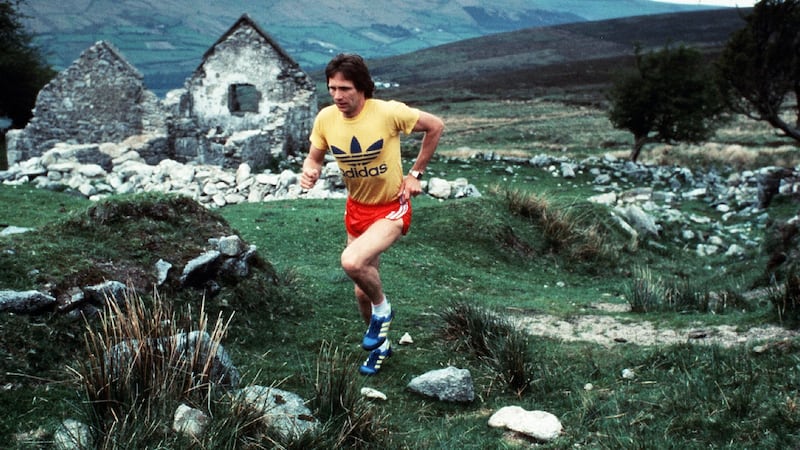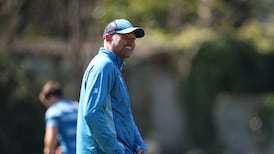A young writer comes to the city. He struggles to survive and is constantly hungry. He sells a short story and gives the money away. He reviles himself for his poverty, shouts epithets at himself, inventing insulting names, priceless treasures of coarse abusive language.
“I began running to punish myself, left street after street behind me at full blast, pushed myself on with inward jeers, and screeched silently and furiously at myself whenever I felt like stopping. With the help of these exertions I ended up far along Pile Street. When I finally did stop, almost weeping with anger that I couldn’t run any further, my whole body trembled, and I threw myself down on some steps…”
Even now few men of words have the capacity to startle like Knut Hamsun. In Hunger, his first novel and enduring masterpiece, he journeys into the mind of a young writer whose near starvation drives him to constantly fluctuating extremes of euphoria and despair, resulting in a darkly comical psychological lesson from somewhere on the sharp edges of experience.
His wandering city is Kristiania, now Olso. The year is 1890, Hamsun was just 31 and his nameless hero won’t be our Stephen Dedalus (Hamsun liked to break grammatical rules, skip tenses around). In the end Hunger is not necessarily a metaphor for anything, least of all the tormented or misunderstood writer, and still it’s easy to see without reading too far how it might work in part as that most common of sporting metaphors, the hunger that feeds or else doesn’t feed the similarly fluctuating extremes of euphoria and despair that come with success and failure.
The hunger is there; is the hunger there? It’s become so loose in the vernacular by now much of the meaning may be lost, distanced from the often brutal machinations of the human mind and heart, or as Hamsun once told a friend: “What interests me are my little soul’s endless emotions, the special, strange life of the mind, the mysteries of the nerves in a hungry body.”
The sort of hunger perhaps the Ireland rugby team is now playing with, or might not be there had they broken that glass ceiling at the last World Cup; the sort of hunger perhaps Leona Maguire played with in her breakthrough win on the LPGA Tour in Florida last weekend, “17 years in the making”, as she said herself, not just after struggling to make the cut the previous week; the sort of hunger perhaps the Cincinnati Bengals have over the Los Angeles Rams in Super Bowl LVI. Who really knows?
Something about this time of the year brings me back into Hamsun’s realm; the still bitter sting of the icy dawn, the first hint of growth in the soil. He was a constant companion when first moving into the mountain landscape which by turns of the hour or light can be touchingly calm or tortuously bleak, the hunger for it always more profound in winter.
One of his later novels was titled Growth of the Soil. It won him the Nobel Prize for Literature in 1920, two years before James Joyce published Ulysses - a style Hamsun unquestionably influenced. Still Hamsun fell well out of favour in his native Norway by the time of his death, 70 years ago this month, in 1952. Although never convicted, his Nazi sympathies proved too much of a betrayal for most, wounds which time has only partly healed.
Today what is hunger in sport only the same need, desire, necessity to be satisfied, same as in any metaphorical sense, knowing one must be repeatedly eclipsed by the other, but sometimes there’s more. In distance running, hunger is often found masquerading in different ways, whether or not that still exists in sufficient quantity to tackle the hard grind necessary to make an impact, especially compared to years ago.
Last Sunday in New York, seeing Irish milers smiling again, there was evidence that hunger is back. Racing on the World Athletics Indoor Tour, Andrew Coscoran and Luke McCann also turned back the clock on an Irish tradition, Coscoran timing his run to perfection to win the mile in 3:53.64, McCann also finishing fast to place third, clocking 3:53.87.
At age 25, Coscoran took three seconds off his previous indoor best, his hunger stirred perhaps by a disappointing race at the Millrose Games the week before, finishing 12th in the Wanamaker Mile; McCann, just 23, ran five seconds quicker than in the Invitational Mile the week before, and both Dubliners now sit sixth and seventh on the Irish all-time indoor list.
“Wow, I can’t believe it was an Irish one and three there,” said event co-commentator Jenny Meadows, her surprise somewhat justified: at 40, the former British 800m standout may be too young to remember when Irish milers ruled the indoor racing circuit in America, the last real evidence of that being Mark Carroll winning the Wanamaker Mile 22 years ago, following in the spikes of Ronnie Delany, Eamonn Coghlan, Marcus O’Sullivan and Niall Bruton.

Indoors, Coghlan still sits out there on his own with his 3:49.78, a time set in 1983. It stood as a world record for 14 years, before Hicham El Guerrouj eventually broke it, and if it appears Coscoran and McCann still have distance to go, there was something else behind Coghlan’s hunger for running that February night at the Meadowlands Arena in East Rutherford, New Jersey.
In the previous two years, his original mentor Jerry Farnan and adored coach Jumbo Elliott both died suddenly, and Coghlan had turned to his father Bill for more moral support. The plan was for his father to travel to New York to watch him chase his world record, which he did, Coghlan first winning a then fifth Wanamaker Mile in 3:53.0, though short of his then best of 3:50.6. There were plenty more races lined up, only two days later, on February 2nd, Coghlan returned from a morning run around his home in Rye to find his father hadn’t awoken. He went upstairs and discovered he’d died in his sleep, aged 63.
Naturally distraught, Coghlan returned home to Dublin for the funeral, considering his indoor season finished until his mother Catherine convinced him otherwise. My father was also at the funeral and asked Coghlan about his next plan: “I’m going back to America to break the world record for the man in that coffin.”
The Meadowlands meeting was scheduled for February 12th, only that got cancelled because of a snowstorm. By sheer fortune and good deed, an alternative date was set for February 27th, Coghlan promising CBS TV he wouldn’t disappoint, and he didn’t, his 3:49.78 world record shown live nationwide.
It was as if, like in Hamsun’s mind, hunger can exist on existential terms, which is likely what Hunger is getting at in the first place, like when there is nothing to keep him going, he keeps going, and he walks straight into the twentieth century.
















